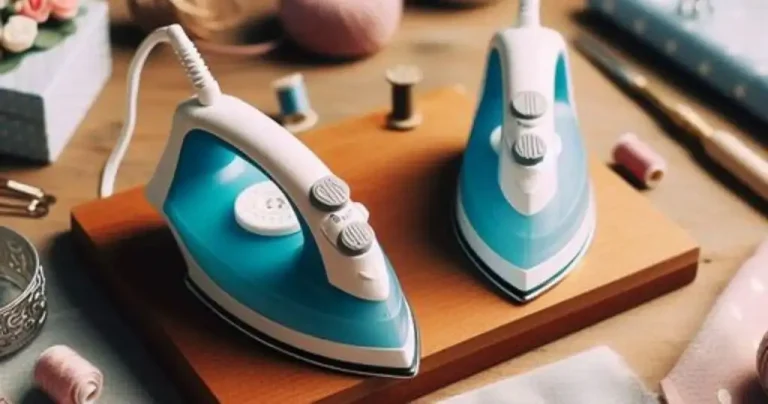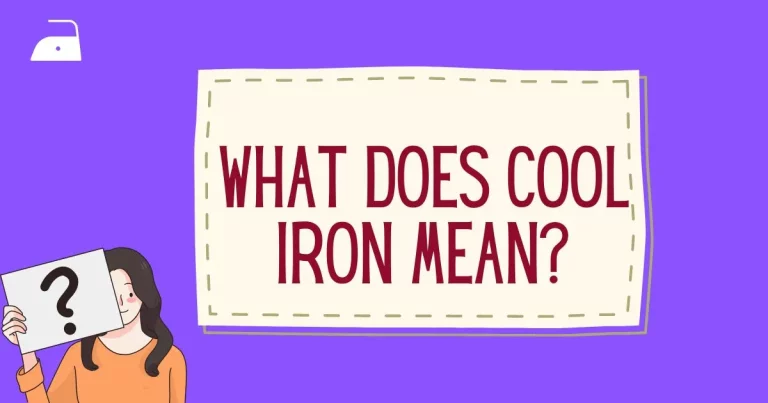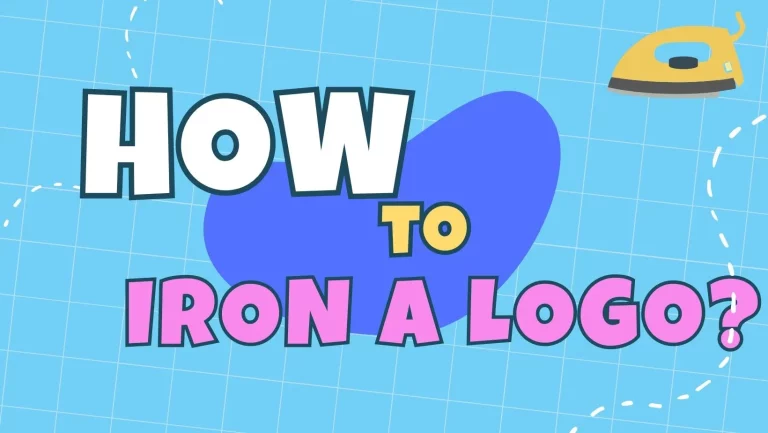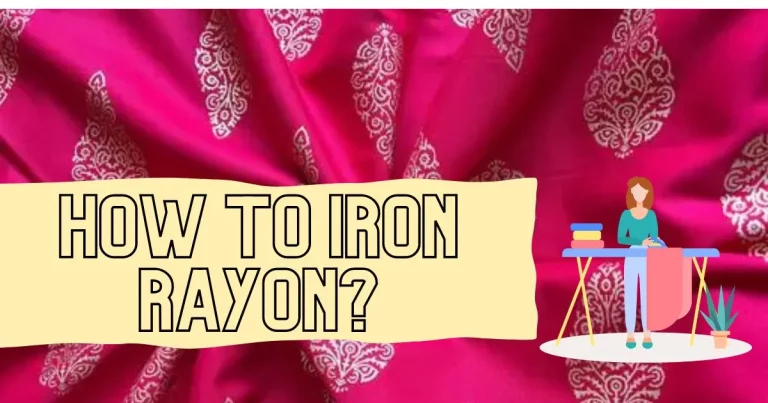HOW TO PUT AN IRON ON PATCH – 10 BEST TIPS AND TRICKS
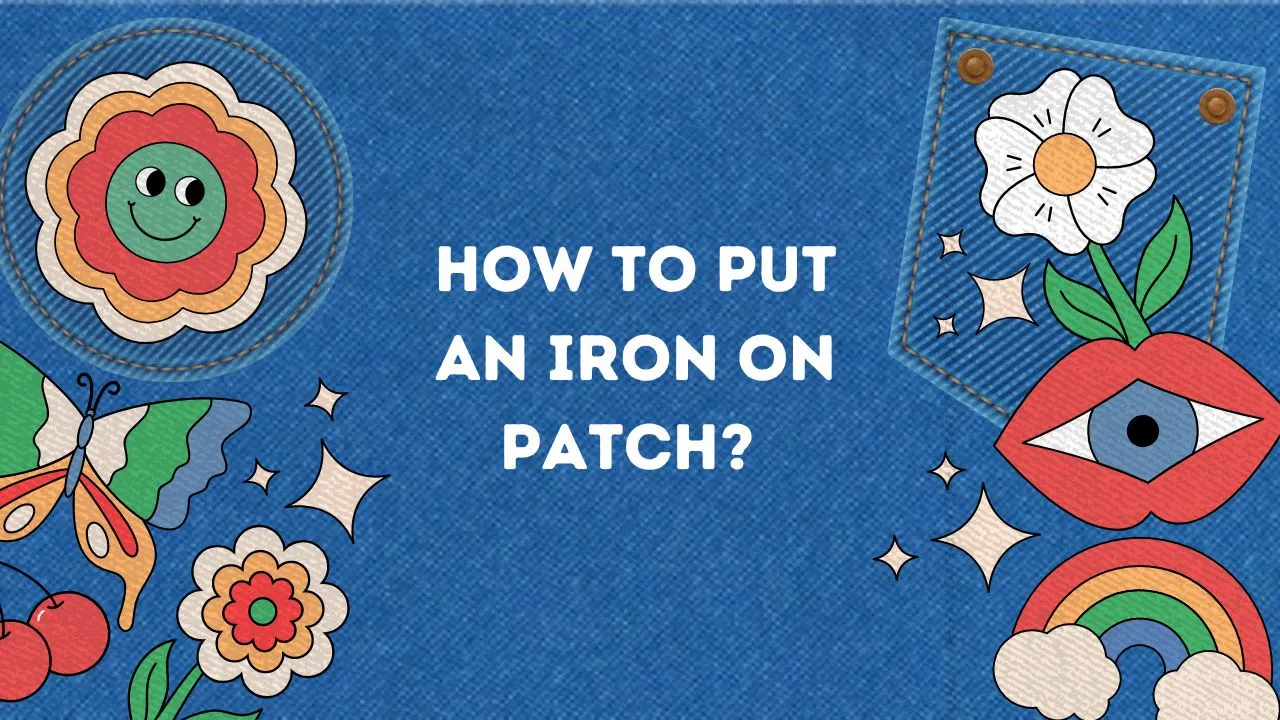
Learn how to put an iron on patch on clothing, bags, and accessories with this step-by-step guide. Express your creativity and elevate your style effortlessly!
Iron on patches are a fantastic way to add personality and style to your clothing, bags, and accessories. Whether you want to revamp an old jacket, customize a backpack, or simply make a fashion statement, iron-on patches offer a versatile and fun solution. With their easy application process, you don’t need to be a crafting expert to achieve impressive results.
How to iron on patches Tutorial
This step-by-step guide will walk you through the simple process of how to put an iron on patch on any fabric, allowing you to express your creativity and elevate your wardrobe in no time.
In this informational article, we will cover all the essential tips and tricks to ensure your iron-on patches adhere securely and look professionally applied. We will also discuss the necessary materials you’ll need, the proper preparation of your fabric, and the actual ironing process. So, let’s dive in and unleash your inner fashion designer as we explore the art of applying iron-on patches!

What material do patches stick to best?
In the world of iron-on patches, the materials they adhere to can significantly impact the longevity and overall appearance of your designs. While iron-on patches can stick to a variety of fabrics and materials, some surfaces yield better results than others. Understanding which materials work best with iron-on patches will help you choose the ideal canvas for your creative projects.
Here is a comprehensive table outlining the materials that patches stick to best:
| Material | Suitability for Iron-On Patches |
| Cotton | Excellent adhesion and easy application for iron on patch |
| Denim | Ideal for patches, holds well over time |
| Canvas | Sturdy surface, patches adhere effectively |
| Twill | Great for patches, provides a smooth finish |
| Polyester | Good adhesion, but test with low heat first |
| Blends (Cotton/Polyester) | Usually works well, test before ironing |
| Wool | Generally suitable, use low heat and press |
| Felt | Suitable for some patches, check instructions |
| Nylon | Tricky to adhere, consider sew-on patches |
| Leather | Not recommended, better for sew-on patches |

Remember, before learning how to put an iron on patch, it’s essential to test a small corner of the fabric first to ensure it can withstand the heat. Additionally, some patches come with specific instructions or guidelines for different materials, so be sure to check the packaging or product information provided by the manufacturer.
By selecting the right materials and following our step-by-step guide, you’ll be well on your way to creating eye-catching and long-lasting iron-on patch designs on your favorite items!
How to iron on a patch – Step by step guide

Step 1: Check Suitability and Choose the Right Fabric
Before you begin, check the garment’s tag or label for an iron symbol. Look for a small icon of an iron. If there’s an “X” through it, the item can’t be ironed safely. One dot, 2 dots, or 3 dots inside the icon mean the item can be ironed at low, medium, or high heat, respectively.
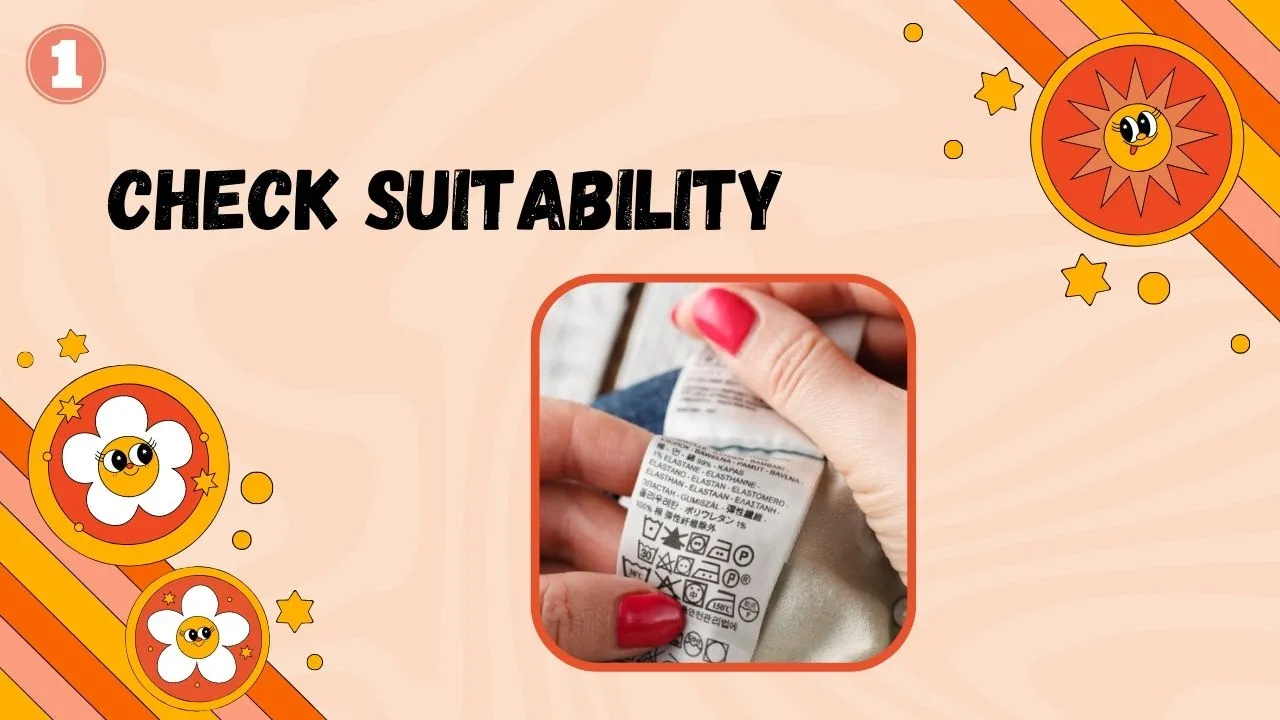
Avoid ironing sensitive fabrics like vinyl, rayon, nylon, leather, silk, or other animal-product materials, as the heat can damage them. The best fabrics for iron-on patches are sturdy ones like denim, canvas, cotton, polyester, or cotton blends.
Step 2: Choose Placement and Prepare the Fabric
Lay your garment flat and mark the patch’s exact location. For precise placement, like putting a patch in the middle of a pocket, use a tape measure to ensure it’s centered. Then, use a fabric marker to add a small dot to the fabric where the center of the patch will go.

If you’re covering a hole, trim the patch and place it so the edges cover at least 0.25 inches (0.64 cm) of fabric around the hole. Plan your patch layout if adding multiple patches, leaving room for future designs.
Step 3: Heat up the Iron
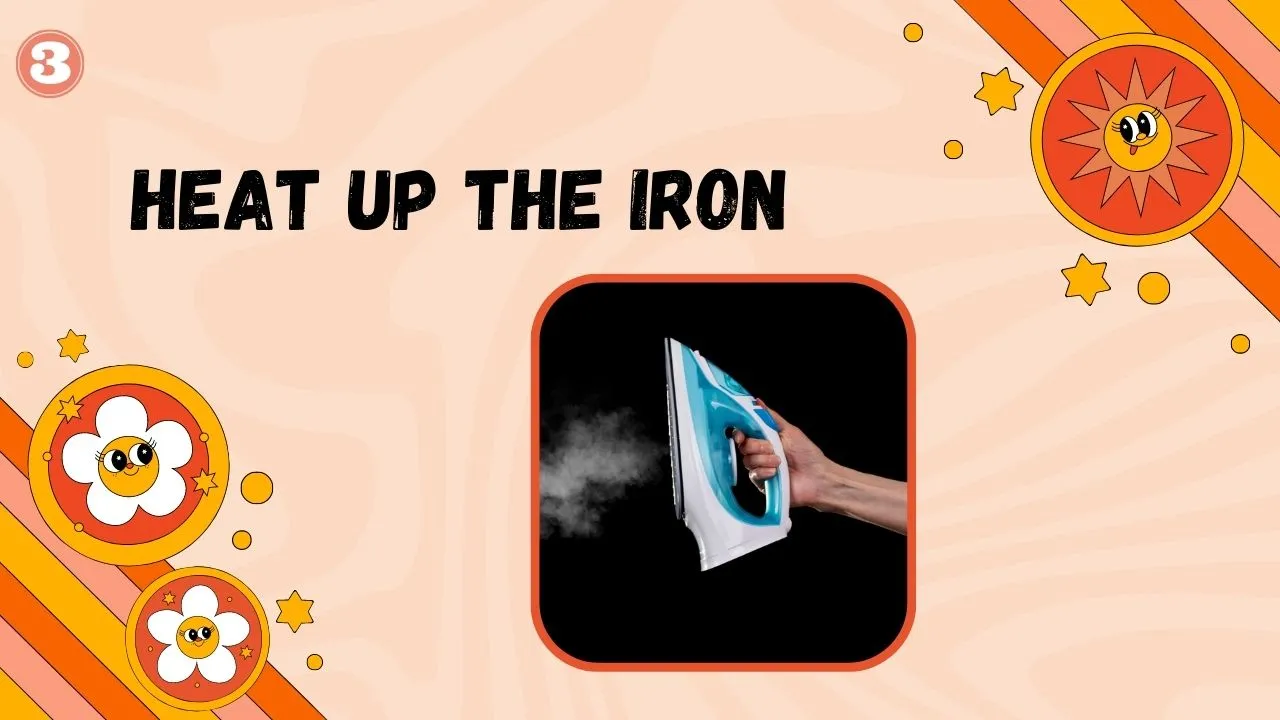
Set your iron to the appropriate temperature based on the fabric type. For heavy fabrics like denim or canvas, use the hottest setting. Choose medium or medium-high heat for cotton or polyester. Ensure the steam function is off, and there’s no water in the iron, as moisture can reduce the adhesive’s effectiveness. If ironing polyester, start with medium heat and raise the temperature if needed to avoid burning or discoloration.
Step 4: Position the Patch

In step 4 of learning how to put an iron on patch, peel the backing off the patch and place it where you want it. If you previously marked your fabric, center the patch on the fabric marker dot. Make sure the adhesive side of the patch is laying flat and that the edges aren’t crooked or angled unless intended. For embroidered patches without adhesive, place fusible webbing between the patch and fabric.
If using transfer paper patches, peel the image side and place it face down. For patches meant to blend in, slide them under or inside the garment to reveal the print side through the hole.
Step 5: Prepare for Ironing
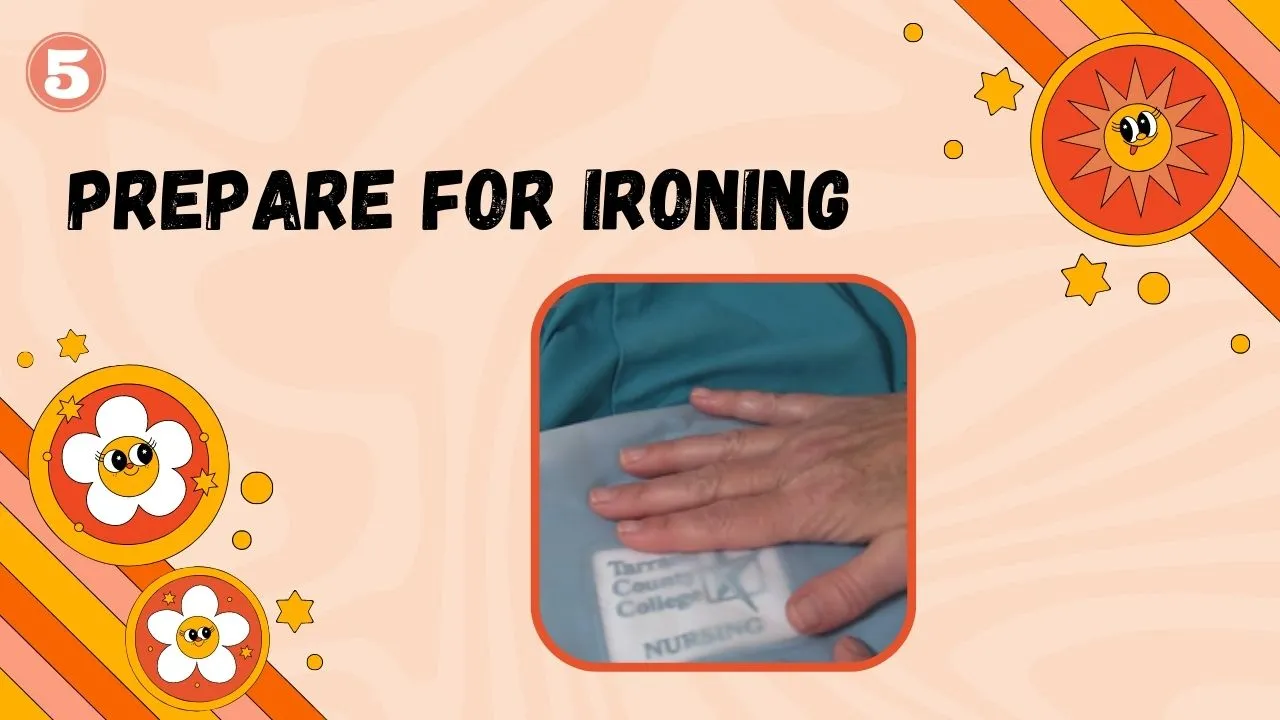
Lay parchment paper or a thin cloth over the patch carefully to protect your fabric and the patch from direct heat. This also safeguards your iron from any rogue adhesive leaking out from underneath the patch.
Step 6: Iron the Patch using Parchment Paper
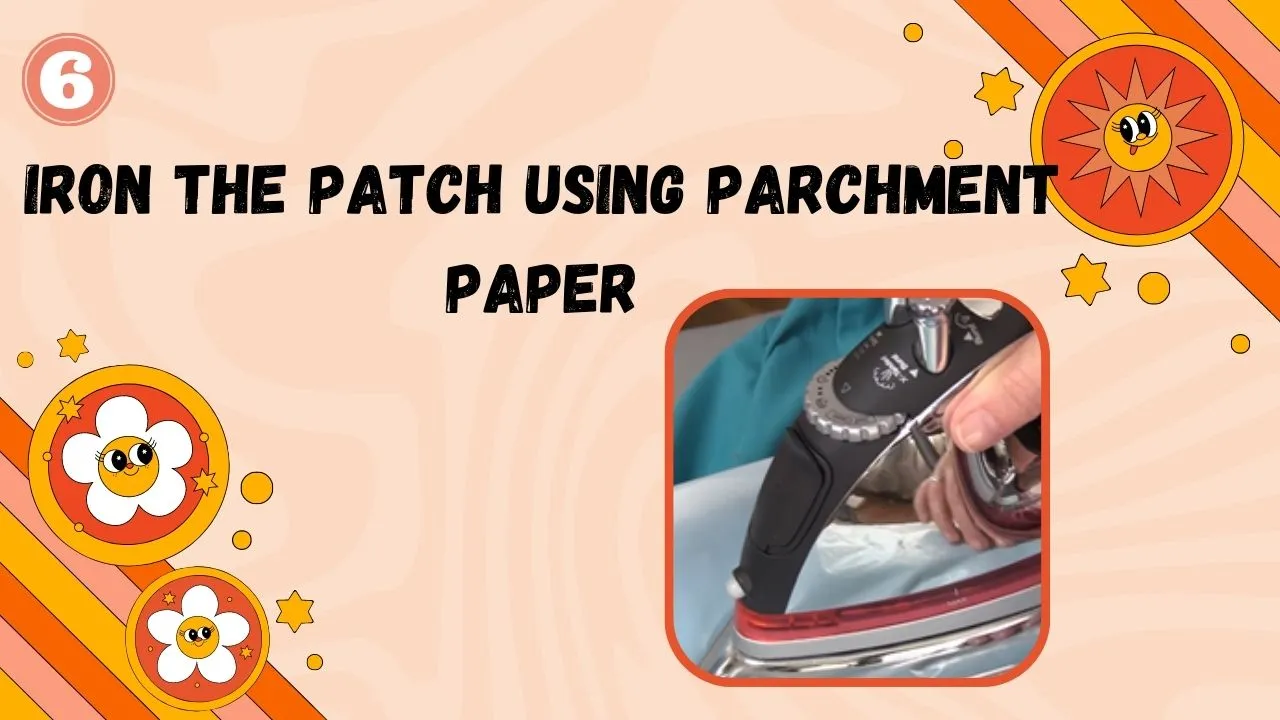
Press the hot iron firmly over the parchment paper for 30-60 seconds. Move the iron continuously to ensure even adhesion. For large patches, iron for up to 1 minute. Afterward, flip the garment and iron the backside of the patch directly for another 30 seconds.
Step 7: Iron the Patch without Parchment Paper

If you’re not using parchment paper, iron directly on the patch for 30-60 seconds. Ensure you move the iron continuously and apply firm pressure for complete adhesion.
Step 8: Cool and Check Adhesion

Allow the patch to cool before testing its adhesion. Gently try lifting the edges or corners of the patch. If it moves slightly, repeat the ironing process with the parchment paper or directly without parchment for another 10 seconds until it sticks securely.
Step 9: Final Check and Reinforcement with sewing (Optional)
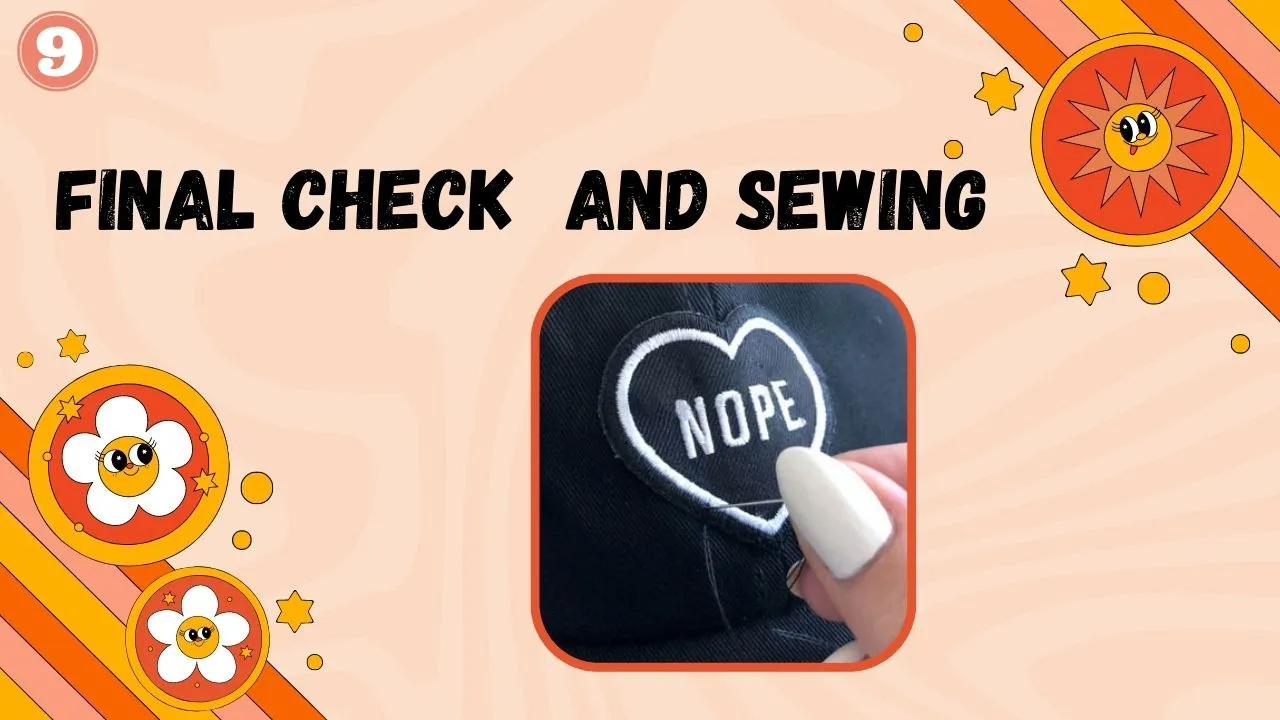
Inspect the patch for any loose edges or corners. If needed, reinforce the patch’s corners and edges with matching thread using a sewing machine or a needle and thread. A simple straight stitch or running stitch will provide additional support to keep the patch securely attached.
Congratulations! You’ve successfully learnt how to put on an iron on patch to your garment or fabric using the parchment paper method and other techniques. With these step-by-step instructions, you can confidently showcase your creativity and personalize your clothing and accessories with eye-catching iron-on patches. Remember to choose the right fabric and apply the appropriate heat settings to achieve professional-looking results. Enjoy your newly customized garments and accessories with pride!
What is the best iron on patch temperature?
For optimal results when ironing on patches with cotton fabric, it is recommended to set your iron to 350°F. When working with denim, it is best to use the highest temperature setting available, which is typically around 450°F. For sheer fabrics, sewing on the patches is advised to achieve better and more secure results.
| Fabric Type | Iron on Patch Temperature | Iron on patch temperature setting |
| Cotton and Cotton Blends | 350-400°F or 175-205°C | Medium-High to High Heat |
| Denim and Canvas | 400-450°F or 205-230°C | Highest Heat Setting |
| Polyester | 300-340°F or 150-170°C | Medium Heat |
| Delicate Fabrics (Silk, Rayon, Nylon, etc.) | Sew On Patches Instead | Avoid Ironing |

Pro-tip:
Please note that these temperature ranges are general guidelines. Always refer to the care label on your garment and the instructions provided with the iron-on patch for the most accurate temperature recommendations. Additionally, it’s essential to test a small, inconspicuous area of the fabric before applying the patch to ensure it can withstand the chosen heat setting.
10 Tips and tricks for how to iron on patch
Below are 10 expert tips to help you master the art of how to put an iron on patch:
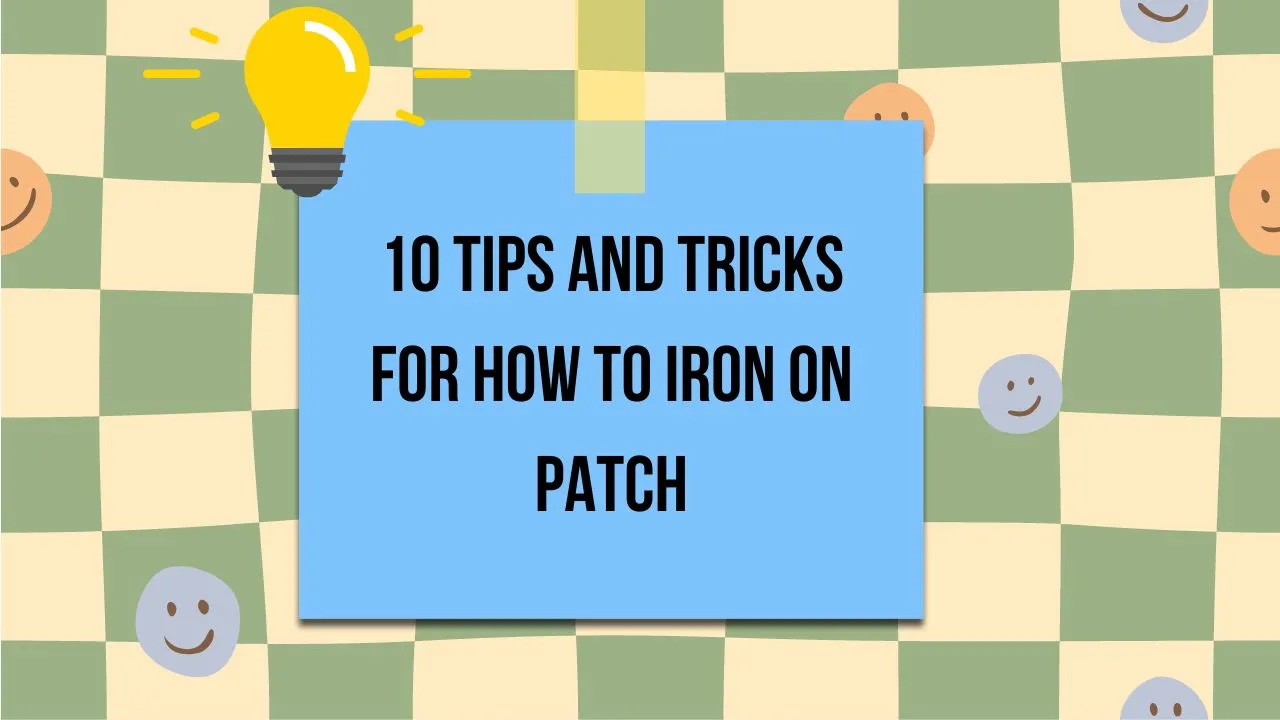
With these mind-blowing tips and tricks, you’ll become a patching maestro, turning ordinary clothes into extraordinary fashion statements. Embrace the art of iron-on patching, and let your creativity soar!
How to iron on embroidered patches?
Ironing on embroidered patches is a straightforward process that allows you to add intricate and stylish designs to your clothing and accessories. Here’s a quick guide on how to put an iron on patch that is embroided:
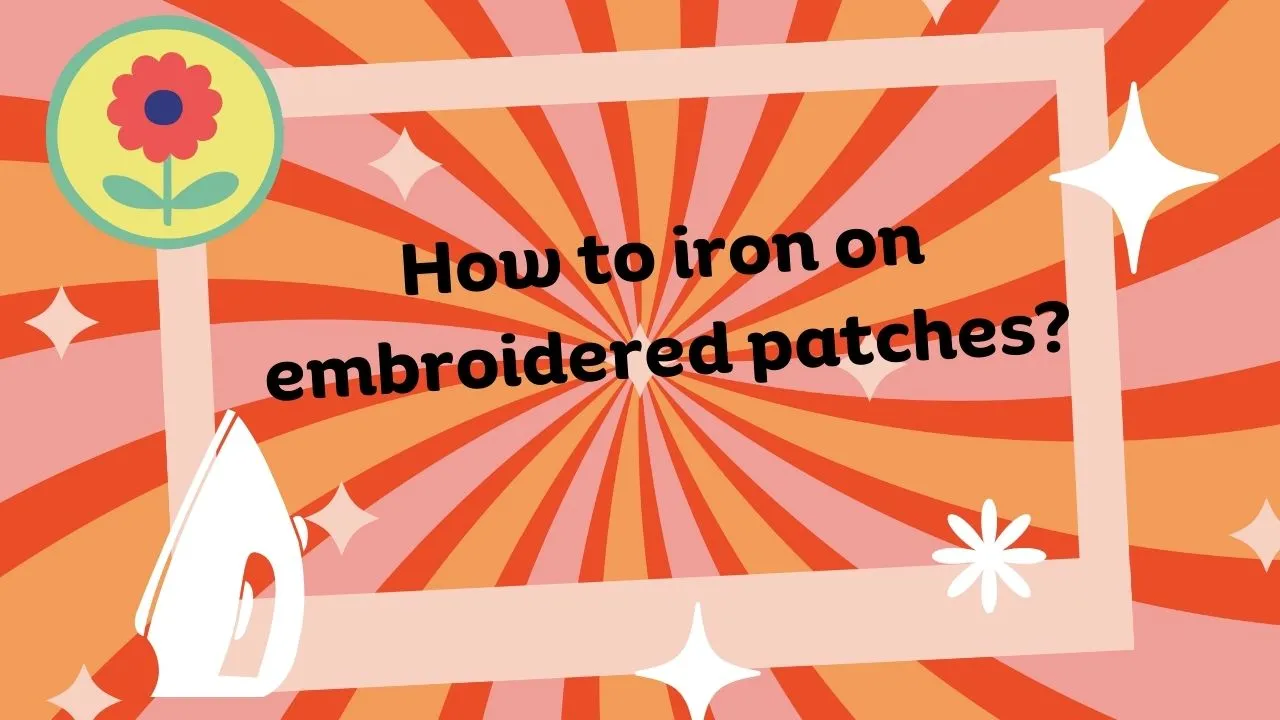
How to iron on a patch to a jersey?
Transforming your jersey with how to put an iron on patch is a fun and easy way to showcase your unique style and support your favorite teams. Just follow these simple steps:
With these simple steps, you’ll be able to learn how to iron a patch on a jersey effortlessly, creating a standout and personalized look that represents your passion and individuality.

How to apply patches to leather jacket?
Applying patches to a leather jacket requires a different approach than ironing. Here’s a short guide on how to put an iron on patch to a leather jacket:
With these steps, you can confidently attach patches to your leather jacket without ironing, elevating its style and making a bold fashion statement.

How to apply an iron on patch to a backpack?
To learn the art of mastering how to put an iron on patch to a backpack, start by ensuring the backpack is clean and flat. Place the patch in the desired position and cover it with a thin cloth or parchment paper. Apply heat from the iron for 15-20 seconds with firm pressure. Once cooled, your backpack will have a stylish and personalized touch!

How to apply an iron on patch to a shirt?
In order to learn how to put an iron on patch to a shirt, begin by positioning the patch in your preferred spot on the shirt’s fabric. Place parchment paper or a thin cloth over the patch to shield it during ironing. Apply firm pressure with the iron for around 15-20 seconds, allowing the patch to cool down. Now your shirt is adorned with a fashionable and unique design that reflects your personal style!

Read More: How to iron a dress shirt
How to use iron on a patch for jeans?
Adding an iron-on patch to your favorite pair of jeans is a breeze! First, choose the perfect spot on your jeans for the patch. Lay the jeans flat, position the patch, and cover it with parchment paper to protect both the patch and fabric. Apply heat with your iron for about 15-20 seconds, and voila! Your jeans now boast a stylish and personalized touch that sets you apart with a touch of creativity!
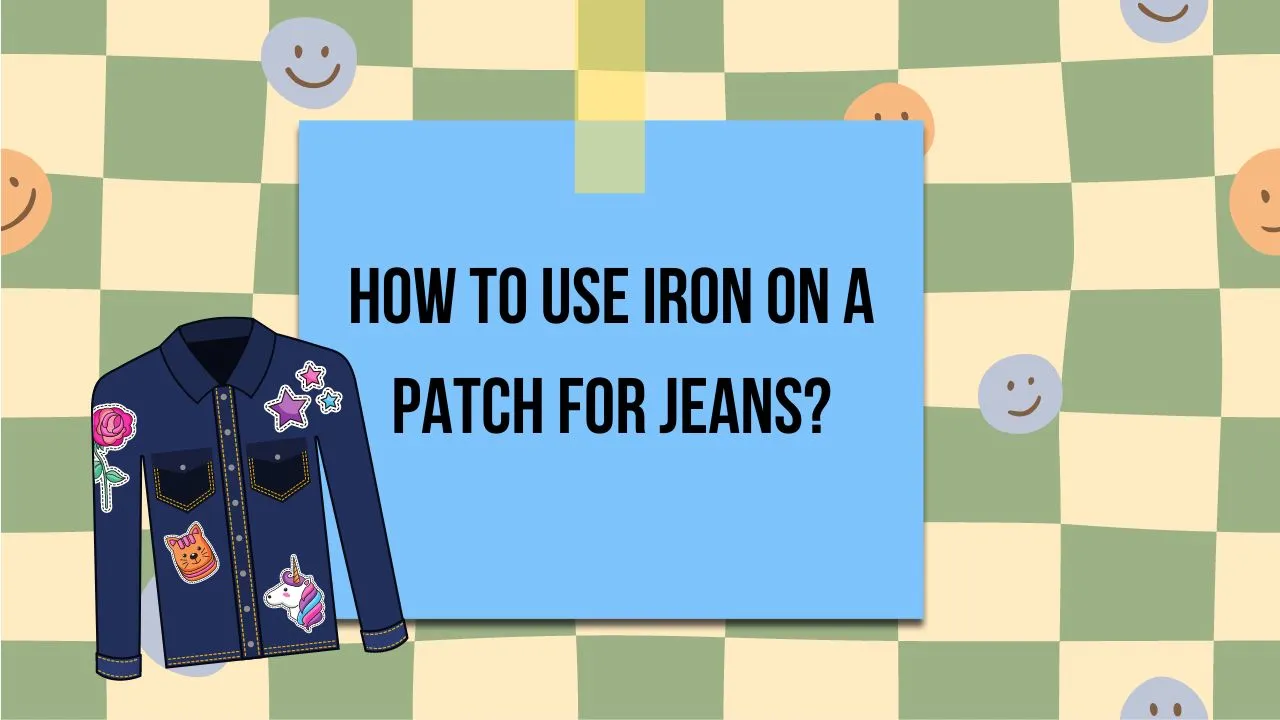
How to apply an iron on patch to a hat?
Personalizing your hat with an iron-on patch is simple and fun! Start by placing the patch on your hat in the desired location. Cover it with a thin cloth or parchment paper to shield both the patch and the hat. Apply heat from the iron for approximately 15-20 seconds, and there you have it! Your hat is now adorned with a unique and eye-catching design that reflects your individuality and flair.

How to apply patches to nylon?
However, it’s crucial to exercise caution when ironing nylon, as excessive heat can damage the fabric.
Attaching patches to nylon is a straightforward process. Begin by positioning the patch on the nylon fabric and covering it with parchment paper or a thin cloth. Apply heat from the iron for about 15-20 seconds, and the patch will adhere securely.

Pro tip:
Always use a lower heat setting, and if possible, test a small area first to ensure the nylon can withstand the iron’s temperature. Additionally, consider sewing the edges of the patch for added durability on nylon materials.
Iron on patches for polyester
When learning how to put an iron on patch to polyester, use a medium heat setting on your iron. Cover the patch with parchment paper and press firmly for 15-20 seconds. Avoid high heat to prevent damage. This gentle method ensures a secure and pristine attachment to polyester fabric.

How do I iron on a girl scout patch?
Position the Girl Scout patch on the uniform, cover it with a cloth, and iron for 15-20 seconds. Allow it to cool before checking. Follow Girl Scouts’ instructions for best results.
Why is your iron on patch not sticking?
There are several reasons why an iron-on patch may not stick properly:
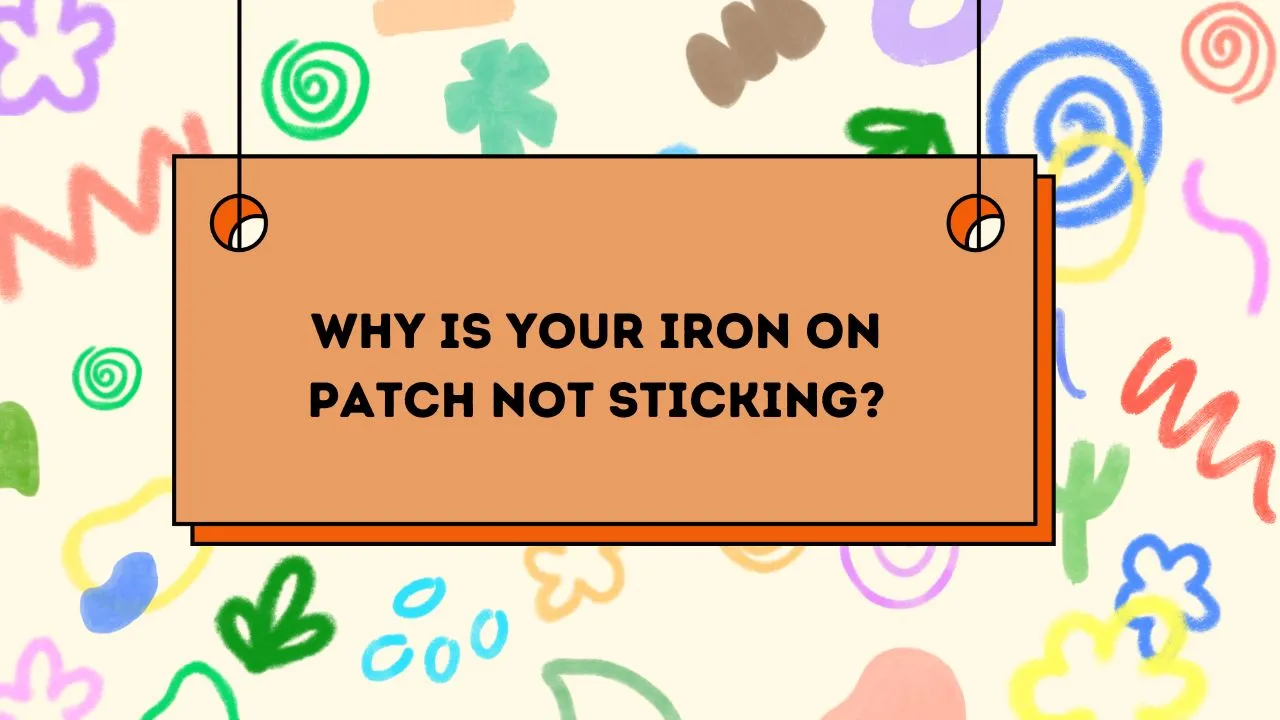
Pro-tip:
To ensure a successful application, follow the patch’s instructions, use the appropriate heat and pressure, and ensure the fabric is clean and suitable for ironing.
5 important things to keep in mind when learning how to put on an iron on patch
When learning how to put an iron on patch always keep 5 main things in your mind:

10 DIY ideas for how to apply an iron on patch to a clothing
If you want to do something creative to your clothing gather some iron on patch and try these DIY ideas for how to put an iron on patch at home.

Patch Collage:
Create a patch collage on a denim jacket or vest by arranging multiple iron-on patches in an artistic and eye-catching layout.

Statement Sleeves:
Elevate plain sleeves of a t-shirt or sweatshirt by adding vibrant patches along the arms for a bold and trendy look.

Pocket Accents:
Add a touch of charm to your jeans or shirts by applying small iron-on patches to the pockets for a playful and unique twist.

Colorful Cuffs:
Transform the cuffs of a long-sleeved shirt or cardigan with coordinating iron-on patches to showcase your personal style.

Personalized Backpack:
Customize your backpack by ironing on patches that represent your interests, hobbies, or favorite characters.

Athletic Appeal:
Add iron-on patches with motivational quotes or sporty symbols to workout clothes, gym bags, or even sports uniforms.

Monogram Magic:
Personalize your clothing with iron-on alphabet patches to display your initials or create custom monograms on shirts, sweatshirts, or hats.

Patch Patterns:
Create geometric patterns or stripes by arranging iron-on patches in a specific sequence on a blank canvas like a plain canvas tote or pillow cover.

Vintage Vibe:
Re-purpose vintage handkerchiefs, scarves, or bandanas by ironing on patches to refresh their style and turn them into trendy accessories.

Color-Block Chic:
Experiment with color-blocking by combining patches in different shades to give a contemporary and artistic flair to your outfits.

How to remove iron on patches?
Removing iron-on patches is a straightforward process. Start by gently heating the patch with an iron on a low setting to soften the adhesive. Then, use a pair of tweezers or your fingers to peel off the patch slowly. If there is any residue left on the fabric, place a piece of parchment paper over it and iron again to lift off the remaining adhesive. With a little care and patience, you can easily remove iron-on patches without damaging your clothing.
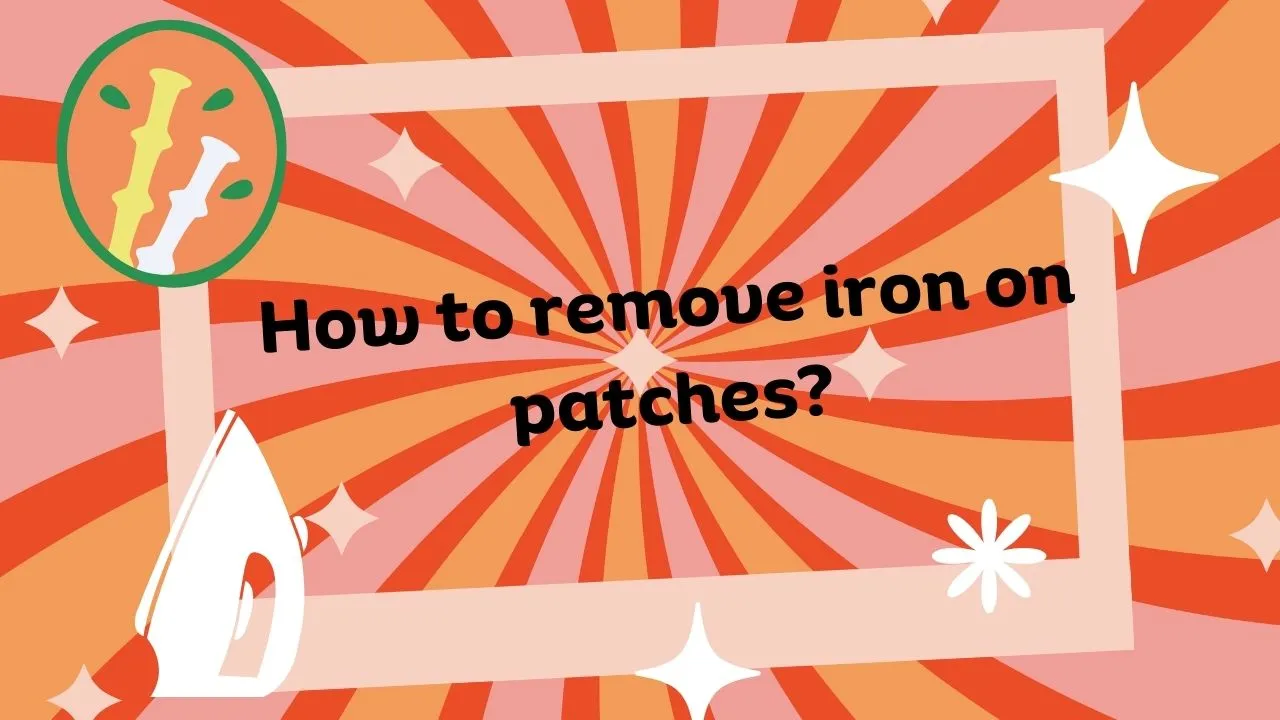
Conclusion – how to put an iron on patch
In conclusion, mastering the art of how to put an iron on patch opens up a world of creative possibilities to personalize and revamp your clothing and accessories. With the right tools, techniques, and a touch of imagination, you can effortlessly transform plain garments into unique fashion statements that reflect your individual style. Whether you’re embellishing denim jackets, customizing backpacks, or adding flair to t-shirts, the process is simple and rewarding. So, embrace your inner DIY enthusiast, have fun experimenting, and proudly showcase your iron-on patch creations with confidence and pride.
How to Iron on patches?


